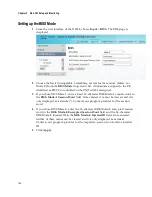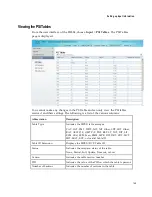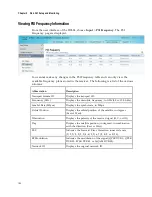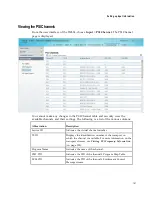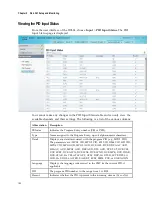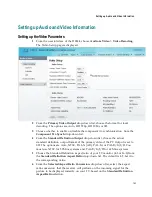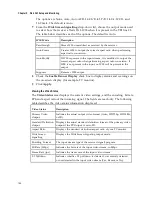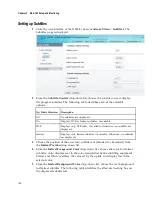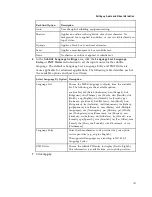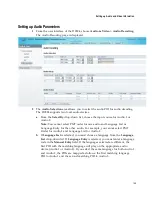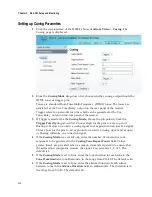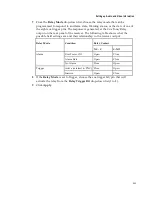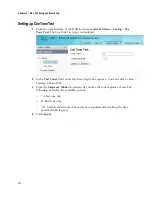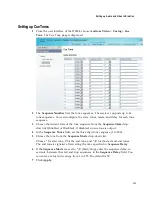
Chapter 5 Web GUI Setup and Monitoring
202
Setting up Cueing Parameters
1
From the user interface of the D9824, choose
Audio & Video
>
Cueing
. The
Cueing page is displayed.
2
From the
Cueing Mode
drop-down list, choose whether cueing output should be
DTMF tones or trigger pins.
Tones are standard Dual-Tone Multi-Frequency (DTMF) tones. The tones are
generated at the Cue Tone/Relay output on the rear panel of the receiver.
Trigger refers to open-collector pins which can be generated at the Cue
Tone/Relay output on the rear panel of the receiver.
3
If Trigger is selected as the
Cueing Mode
, choose the pin polarity from the
Trigger Polarity
drop-down list. Choose High for the pins to act as open or
floating collectors on an active cueing signal and as ground on an inactive signal.
Choose Low for the pins to act as ground on an active cueing signal and as open
or floating collectors on an inactive signal.
4
If the
Cueing Mode
was set to Tone, enter the number of consecutive tone
sequences to be generated in the
Cueing Tone Repeat Count
field. Values
greater than 1 are provided when a scenario demands repetition to ensure that
the ad insertion equipment receives the signal. You can enter 1, 2, or 3. The
default is 3.
5
If the
Cueing Mode
is set to Tone, enter the tone duration for each tone in the
Tone Duration
field, in milliseconds, in the range from 0 to 80. The default is 40.
6
If the
Cueing Mode
is set to Tone, enter the silence duration of each silence
between tones in the
Silence Duration
field, in milliseconds. The duration is in
the range from 0 to 80. The default is 40.
Summary of Contents for D9824
Page 22: ......
Page 26: ...Chapter 1 Introduction 4 On Screen Display support on baseband output NIT Retune Recovery ...
Page 40: ......
Page 164: ......
Page 306: ......
Page 368: ......
Page 370: ......
Page 388: ......
Page 410: ...Appendix C Compliance 388 Declarationof Conformity ...
Page 415: ......

